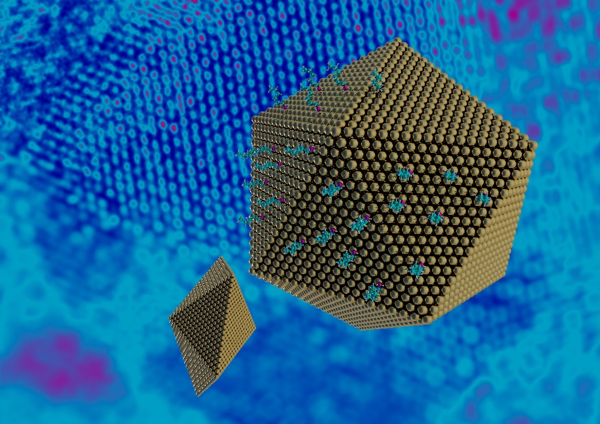Explore the offer
Advanced Characterization and Fine Analysis / Electron, Ion and photon beam microscopy
Transmission Electron Microscopes and Scanning Transmission Electron Microscopes

Transmission Electron Microscopes (TEM) and Scanning Transmission Electron Microscopes (STEM) are designed for high-resolution imaging and analysis.
In both cases, high energy electrons, incident on ultra-thin samples called TEM lamella (typically <100nm), travel through the specimen.
Depending on the density, crystallinity, orientation, etc. of the material present, electrons are scattered differently, giving rise to an image of the sample with different contrast features according to specimen properties and to the microscope setup.
Usually, the magnified image of the sample is focused on a CCD or CMOS camera. On the same system is also possible to acquire the electron diffraction produced by a specific area of the sample.
Modern TEM are equipped with a Cold Field Emission Gun (FEG) or with a Schottky FEG, making them suitable for materials science, nanotechnology, and various fields requiring detailed structural and compositional analysis in a local nanoscale. Indeed, point resolution below 0.3 nm at 200kV in TEM mode can be reached, according to the
instrument configuration.
In the STEM mode, electrons pass through the specimen, but, the electron optics focus the beam into a narrow spot which is scanned over the sample in a raster. The rastering of the beam across the sample makes these microscopes suitable for analysis techniques.
According to the specific configuration (see details and the specific availability below, referred to each instrument and facility), the microscope can be equipped with a selection of multiple detectors enabling different techniques, such as Energy-Dispersive x-ray Spectroscopy analysis (EDS), electron energy loss spectroscopy (EELS), STEM detectors in bright field (BF), annular bright field (ABF), annular dark field (ADF) for diffraction contrast, high-angle annular dark field (HAADF) for Z-contrast.
EELS/EDS system control software enables point-by-point signal acquisitions, for the analysis of spectra and maps.
Sample preparation (see details and the specific availability below, referred to each instrument and facility) is a crucial part in TEM experiments.
High quality TEM specimens have a thickness that is comparable to the mean free path of the electrons that travel through the samples, which may be only a few tens of nanometres. Preparation of TEM specimens is specific to the material under analysis and the desired information to obtain from the specimen. Sample preparation laboratories are equipped with the basic tools (diamond saw, polisher, dimpler, ultrasonic cutter, precision ion polishing system, plasma cleaner) commonly used in conventional thinning procedures.

Available instruments
Select instruments to view their specifications and compare them (3 max)
Lab's Facility
Trieste
AREA-RIT
Catania